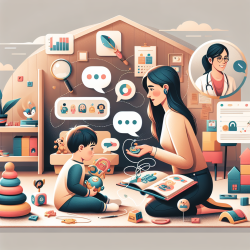Understanding how children communicate with their mothers compared to an unfamiliar listener offers invaluable insights for speech therapists and educators. A groundbreaking study, "Language Children Use with Their Mothers and an Unfamiliar Listener," delves into this topic, revealing critical information that can significantly enhance therapeutic practices.
One of the study's key findings is that there is no significant difference in the complexity of language children use when speaking with their mothers versus an unfamiliar listener. This insight challenges the assumption that children might simplify their language or communicate less effectively with someone they are not as comfortable with. For practitioners, this suggests that the language samples observed in therapy sessions are likely representative of the child's true linguistic abilities, even in unfamiliar settings.
Moreover, the study highlights that mothers can accurately predict the complexity of their children's language. This ability indicates that parents are reliable sources of information about their child's communication skills, which therapists can leverage to gain a deeper understanding of the child's language development. Engaging parents in the therapeutic process and valuing their insights can lead to more tailored and effective intervention strategies.
Here are some practical ways practitioners can implement the outcomes of this research:
- Encourage Parent Involvement: Involve parents in the therapy process by asking them to describe their child's language use at home. This information can provide a richer context for developing targeted interventions.
- Use Naturalistic Observations: Given that children's language use does not significantly differ between familiar and unfamiliar listeners, therapists can confidently use language samples collected in therapy sessions to assess and plan interventions.
- Focus on Functional Communication: Since the study indicates that children communicate their needs and ideas effectively regardless of the listener's familiarity, therapists should focus on enhancing functional communication skills that can be generalized across settings and listeners.
- Promote Parent-Child Interaction Strategies: Teach parents how to engage in interactions that promote language development, based on the understanding that their communication with their child significantly influences language acquisition.
This research underscores the importance of considering the child's language environment and the role of familiar versus unfamiliar listeners in language development. By applying these insights, speech therapists and educators can enhance their practices, leading to more effective communication skills in children.
To explore these findings further and consider their implications for speech therapy and education, Language Children use with Their Mothers and an Unfamiliar Listener.










